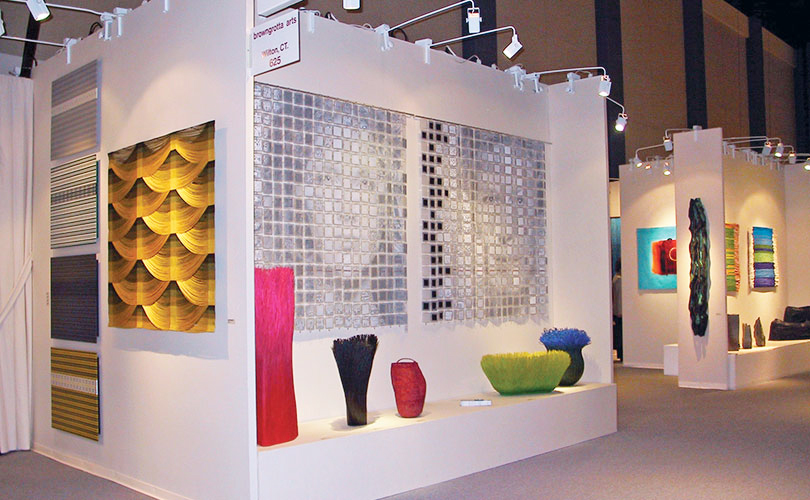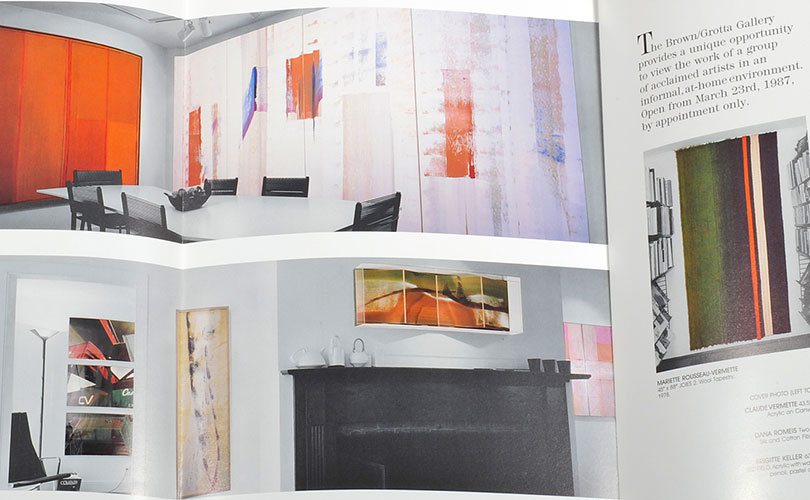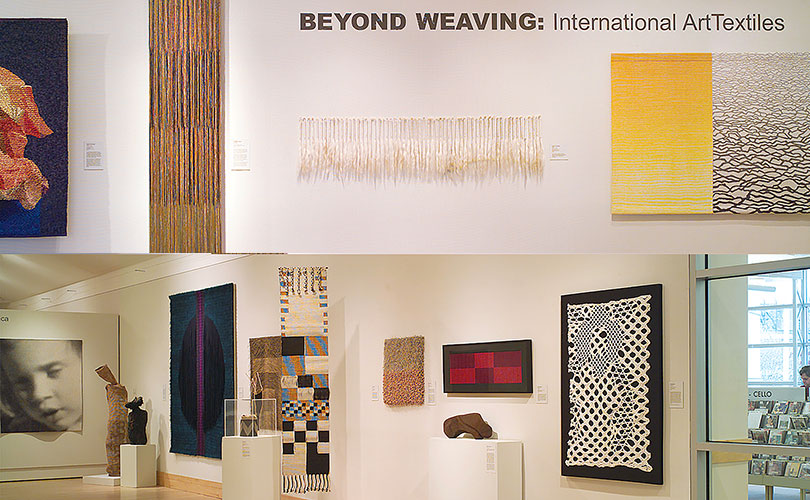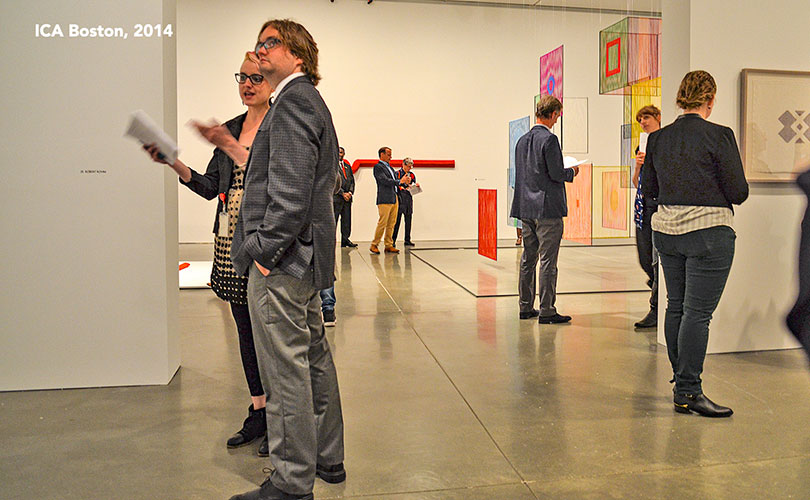In December of 2021 of last year, we were asked to talk to a group of fiber artists about trends we had observed in the art textiles field. In two arttextstyle posts we’ll summarize the insights we shared with the group. First, we described a bit about browngrotta arts’ creative journey and fiber arts’ place in the art world in the years we’ve been the medium’s champion.

browngrotta arts began quite informally in 1987, showing artwork in our Connecticut home at parties or by appointment – a concept we called “art in use.” We quickly discovered two things – First, people weren’t terribly willing to buy paintings from a suburban home, with New York galleries nearby. Second, fiber work was not well represented on the East Coast. The fiber art we showed, however – baskets by Mary Merkel-Hess and Markku Kosonen, and tapestries by Mariette Rousseau-Vermette – was new and interesting to clients and us. We decided to focus on that.

Fiber art on the outs
That said, 90s and early 2000s were not great for fiber art. The slick and shiny were popular in furnishings and design. Some of the public fiber commissions from the 70s had begun to show their age and give fiber a bad name. The craft/art divide was harsh and dark – and women’s work, like weaving, knitting and crochet – was at the bottom of that chasm. The period saw fiber friendly galleries like Sybaris in Detroit, Louise Allrich in Califoria, and Bobby Okun in Santa Fe all close their doors. But we hung in there, with our unusual business model – presenting fiber artists from Japan, Scandinavia, the UK and pioneering and emerging artists from the US, attending art fairs, partnering with art centers and documenting the work in catalogs and on our website.

In 2006, we curated Beyond Weaving: International Art Textiles at the Flinn Gallery in Greenwich, Connecticut, which included work by Sheila Hicks, Magdalena Abakanowicz and Lenore Tawney. Mildred Constantine, the former textile curator at MoMA, told us it was the “best fiber exhibition in 15 years,” which tells you a lot about how the medium had been sidelined in that period.
Gradual reemergence
But slowly, in that time period, fiber’s profile began to improve. Appreciation for natural materials increased as did appreciation for the hand made. Sheila Hicks had an exhibition of miniatures at Bard in 2006; Ruth Asawa a retrospective at the de Young 2007; 50 years of Sheila Hicks opened at the Addison, then the Mint and ICA in Boston in 2010 and so did Contemporary Fiber Art: a selection from the Permanent Collection at the Art Institute in Chicago.

The watershed for fiber art’s resurgence was just four years away. In 2014, Janelle Porter, who had worked on 50 Years of Sheila Hicks, organized the expansive ICA show, Fiber Sculpture – 1960 to the present. The exhibition travelled to Columbus, OH, Produced a detailed book and Porter was awarded a best museum exhibition award.
It was as if a dam had broken – 50 Fiber artists toured the US in Innovators and Legends in 2013, initiated at the Muskegon Museum of Art, a retrospective of François Grossen’s work opened at Blum and Poe and one of Ethel Stein’s work opened at the Art Institute of Chicago in 2014. Anne Wilson, Louise Bourgeois, Lenore Tawney were also featured in Thread Lines at the Drawing Center 2014. Richard Tuttle unveiled a vast installation of weavings in Tate Modern (followed by an exhibition of Textiles by Sonya DeLauney in 2015). The Art Newspaper declared: “Soft Fabrics Have Solid Appeal;” the Wall Street Journal called Fiber “The Art World’s New Material Obsession.”

Fiber Art’s Continued Recognition and Appreciation
The trend has continued since – Anni Albers at the Tate in 2018; Women Take the Floor in Boston; Off the Wall: American Art to Wear in Philadelphia and Taking Thread for Walk at MoMA, all in 2019,Weaving Beyond the Bauhaus in Chicago in 2020 and Olga d’Amaral’s Weaving a Rock in Houston in 2021 and at Cranbrook in 2022. Sheila Hicks, Off the Grid, at The Hepworth Wakefield in West Yorkshire, UK, Faith Ringgold, American People at the New Musuem in New York City open this year as do 34 fiber artists, including Lia Cook, in Subversive, Skilled, Sublime: Fiber Art by Women at the Smithsonian in November.
It’s an exciting time to promote art textiles and fiber sculpture as browngrotta arts has done for three decades. In Contemporary Fiber Art — Trends Observed, Part 2, we’ll examine some of the changes we’ve seen in the field and in the approach of the artists who work with us.
